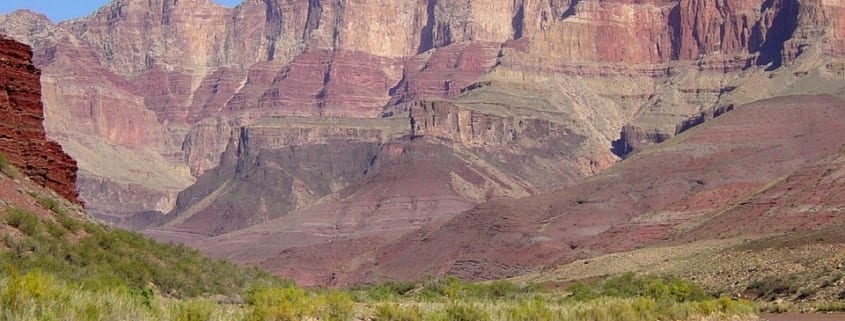Drought-Caused Knickpoint Rapids Create Challenges for Rafters and NPS
The lengthy, severe drought affecting much of the Western United States has resulted in dangerously rough new rapids in parts of the Colorado River flowing through the Grand Canyon. The whitewater rapids have been made especially treacherous during the past several years where part of Lake Mead has receded because of the drought. The gradually falling lake water levels eventually allowed the river water to surge through the rocky area, carving out new paths and carrying loads of silt left behind by the shrinking reservoir.
Some spots have become so turbulent as to be impassable. For example, a newly developed rapid known as Pearce Ferry Rapid, near the end of the Grand Canyon, is classified as Class VI. That is the most extreme level of danger, implying a high risk of death for anyone who dares to try rafting through the rapid. At Pearce Ferry, the fast-flowing water is meandering over accumulations of deposited lake silt and falling over sandstone and limestone outcrops, forming a so-called knickpoint rapid. Such rapids may develop in time into waterfalls. Although the Pearce Ferry Rapid cannot be safely navigated by raft, a motorboat might be able to make it through during certain relatively less-turbulent periods.
In addition to blocking rafters from making a complete river trip through the Grand Canyon, the Pearce Ferry Rapid has also created practical problems and new expenses for the National Park Service (NPS). After it became impossible for rafters to get past the Pearce Ferry Rapid, the NPS spent about $1 million to extend Pearce Ferry Road to the Colorado River. The road extension gave rafters the option of taking their boats out at Pearce Ferry and driving several miles to South Cove, thereby allowing them to bypass the dangerous rapids and continue their trip to Lake Mead.
Because of the dynamic, ever-changing nature of any river rapid system, the NPS’s expensive road extension is probably not a permanent solution to the problem of rough rapids in the Grand Canyon. If another knickpoint rapid were to develop upstream of the new Pearce Ferry take-out ramp, a new take-out option would need to be created.

 https://pixabay.com/en/rafting-colorado-river-white-water-2095669/
https://pixabay.com/en/rafting-colorado-river-white-water-2095669/
 https://pixabay.com/en/colorado-river-canyon-gorge-349620/
https://pixabay.com/en/colorado-river-canyon-gorge-349620/